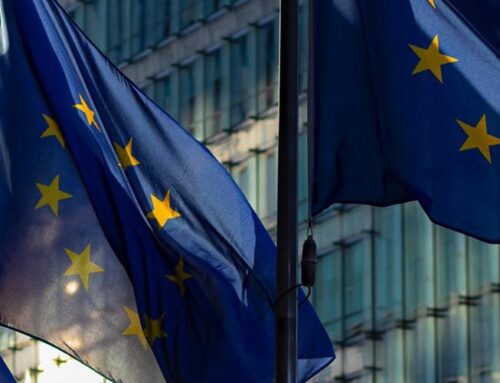TWO DECISIONS ISSUED IN JANUARY 2024 BY COURT OF JUSTICE OF THE EUROPEAN UNION PROVIDE STRICT INTERPRETATION OF THE LIMITATION OF THE EFFECTS OF A TRADEMARK
In January 2024, the Court of Justice of the European Union (“CJEU”) issued two relevant rulings – on 11 January 2024, in Inditex case C-361/22, and on 25 January 2024, in Audi (Support d’emblème sur une calandre) case C-334/22 – about the limitation of the effects of a trademark.
Based on these recent decisions, the CJEU adopted an approach providing for stronger protection of trademarks and conversely narrowing the perimeter of lawful, exempted and free usages of trademarks without the prior consent of their owners.
- INDITEX CASE
The dispute in the main proceedings was between the Spanish company Buongiorno Myalert SA and Inditex SA (i.e. the owner of the national Spanish trademark “ZARA”).
Namely Buongiorno – a provider of information services via the internet and mobile telephone networks – in 2010 launched an advertising campaign for a paid subscription to a multimedia messaging service. The subscription to such service allowed for the participation in a prize draw, in which one of the prizes was a “ZARA gift card”. After clicking on a banner to access the prize draw, on the next screen the subscriber was shown the “ZARA” sign in a rectangle.
Inditex brought an infringement action against Buongiorno claiming infringement of the exclusive rights conferred by the Spanish trademark “ZARA”, since Buongiorno had never obtained the relevant authorization to use the “ZARA” trademark from Inditex.
The action of Inditex was dismissed in the first two degrees of the proceedings by the competent Spanish Courts. The request for a preliminary ruling was raised by the Spanish Supreme Court.
By the decision at hand, the CJEU ruled out a strict interpretation of the hypothesis provided for by art. 6 (1) (c) of EU Directive 2008/95 to approximate the laws of the Member States relating to trademarks (applicable ratione temporis), then repealed by EU Directive 2015/2436.
Such an article provides that: “The trademark shall not entitle the proprietor to prohibit a third party from using, in the course of trade […] the trademark where it is necessary to indicate the intended purpose of a product or service, in particular as accessories or spare parts”.
The question referred to CJEU is as follows: “whether Article 6(1)(c) of Directive 2008/95 must be interpreted as meaning that it covers any use of the trade mark in the course of trade by a third party for the purpose of identifying or referring to, in accordance with honest practices in industrial or commercial matters, goods or services as those of the proprietor of that trade mark, or only use of that trademark which is necessary to indicate the intended purpose of a product marketed by that third party or of a service offered by that party”.
In order to provide its ruling, the CJEU pointed out that:
- “Article 6 of that directive seeks to reconcile the fundamental interests of trade-mark protection with those of free movement of goods and freedom to provide services in the internal market in such a way that trade mark rights are able to fulfil their essential role in the system of undistorted competition which the Treaty seeks to establish and maintain”;
- “the objective pursued by Article 6(1)(c) of Directive 2008/95 is to enable providers of goods or services that are supplementary to the goods or services offered by a trade mark proprietor to use that mark in order to provide the public with comprehensible and full information on the intended purpose of the product which they market or the service which they offer or, in other words, as to the practical link between their goods or services and those of the proprietor of the mark”;
- “the scope of Article 6(1)(c) of Directive 2008/95 refers to the use of the trade mark for the purpose of identifying or referring to goods or services as those of the proprietor of that trade mark only where that use is limited to the situation in which it is necessary to indicate the intended purpose of a product marketed by that third party or of a service offered by that party”;
- “article 6(1)(c) of Directive 2008/95 must be interpreted as meaning that it covers use of the trade mark in the course of trade by a third party for the purpose of identifying or referring to, in accordance with honest practices in industrial or commercial matters, goods or services as those of the proprietor of that trade mark only when such use of the trade mark is necessary to indicate the intended purpose of a product marketed by that third party or of a service offered by that party”.
In view of the ruling of the CJEU, the scope of the limitation of the effects of the TM provided for by Article 6(1)(c) of Directive 2008/95 (so-called “descriptive usage” or “referential use” of a trademark) is limited to a very peculiar circumstance, i.e. “only when” the use of the TM by a third party (not authorized in advance by the trademark owner) is necessary to indicate the intended purpose of a product marketed/service offered by that third party. Any other use of the trademark, even “referential”, should be qualified as an infringement of the exclusive rights of the trademark owner.
- AUDI CASE
AUDI AG is the owner of the following figurative EUTM:

GQ is a natural person engaged in the sale of spare parts for motor vehicles, primarily to distributors of such parts. As part of that business, GQ advertised grilles, adapted and designed for older models of Audi motor vehicles dating from the 1980s and 1990s, and offered those grilles for sale. The grilles contained an element designed for the attachment of an emblem of the brand Audi.
Audi sued GQ claiming the infringement of its figurative EUTM.
For the purposes of this comment, the question referred by the Regional Court of Warwas to CJEU concerns article 14 (1) (c) of Reg. UE 2017/1001 on the European Union trade mark, that provides that: “EU trade mark shall not entitle the proprietor to prohibit a third party from using, in the course of trade […] the EU trademark for the purpose of identifying or referring to goods or services as those of the proprietor of that trade mark, in particular, where the use of that trade mark is necessary to indicate the intended purpose of a product or service, in particular as accessories or spare parts”.
Namely the Polish Court asks whether the article mentioned above should be interpreted as precluding the manufacturer of motor vehicles, which is the proprietor of an EUTM, from prohibiting a third party from using a sign identical with, or similar to, that trade mark in relation to spare parts for those motor vehicles, namely radiator grilles, where that sign consists of the shape of an element of the radiator grille designed for the attachment thereto of the emblem representing that trade mark, irrespective of whether it is technically possible to attach that emblem to that radiator grille without affixing that sign to it.
Preliminary the CJEU stressed that the limitation to the rights of the EUTM owner applies to the extent that the use of the trademark by a third party (who has not obtained the relevant consent) is in accordance with honest practices in industrial or commercial matters. Then, in its decision the CJEU pointed out that:
- “the choice of the shape of that component is guided by the desire to market a radiator grille which resembles as closely as possible the original radiator grille of the manufacturer of the motor vehicles at issue”;
- “such a situation, in which an undertaking which is not economically linked to the proprietor of the trade mark affixes a sign identical with, or similar to, that trade mark to spare parts marketed by it and intended to be incorporated into the goods of that proprietor, must be distinguished from a situation in which such an undertaking, without affixing a sign identical with, or similar to, the trade mark to those spare parts, uses that trade mark to indicate that those spare parts are intended to be incorporated into the goods of the proprietor of that trade mark”;
- “the affixing of a sign identical with, or similar to, the trade mark on the goods marketed by the third party exceeds the referential use referred to in Article 14(1)(c) of Regulation 2017/1001”;
- “article 14(1)(c) of Regulation 2017/1001 must be interpreted as meaning that it does not preclude the manufacturer of motor vehicles which is the proprietor of an EU trade mark from prohibiting a third party from using a sign identical with, or similar to, that trade mark in relation to spare parts for those motor vehicles, namely radiator grilles, where that sign consists of the shape of an element of the radiator grille designed for the attachment thereto of the emblem representing that trade mark, regardless of whether or not there is a technical possibility of attaching that emblem to the radiator grille without affixing that sign to it”.
In view of the ruling of the CJEU, the scope of the limitation of the effects of the TM provided for by Article 14(1)(c) of Reg. 2017/1001 is limited to the mere reference of the compatibility between a spare part and the products to which the trademark refers, while any use that goes beyond such restricted and permitted “area” might be as an unjustified and unlawful infringement of the exclusive rights of the trademark owner.
- CONCLUSION
From the decisions issued by CJEU, I would point out that within the legal European trademark framework, in the balance between fundamental interests of trade-mark protection with those of free movement of goods and freedom to provide services, preference has been given to trademark protection, taking also into account that art. 10 (6) of EU Directive 2015/2436 provides for even more enhanced protection for well-known trademarks, ruling that Member State can adopt rules (as Italy did in 2019, by amending article 20 (c) of the Italian IP Code) relating to the protection against the use of a sign other than use for the purposes of distinguishing goods or services, where use of that sign without due cause takes unfair advantage of, or is detrimental to, the distinctive character or the repute of the trade mark.











